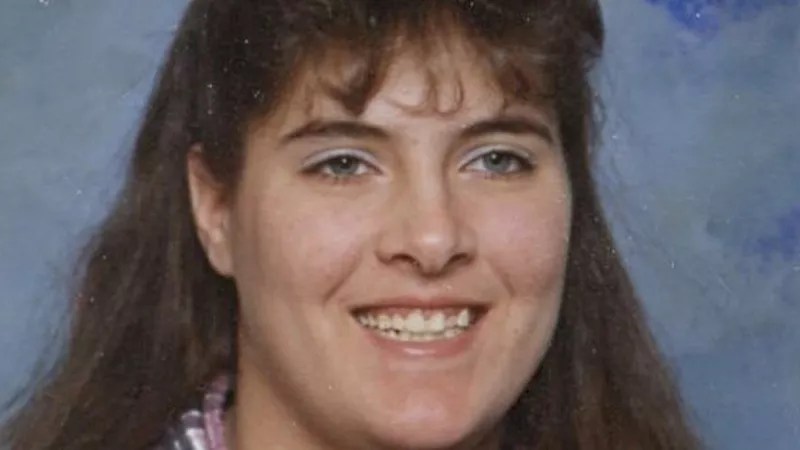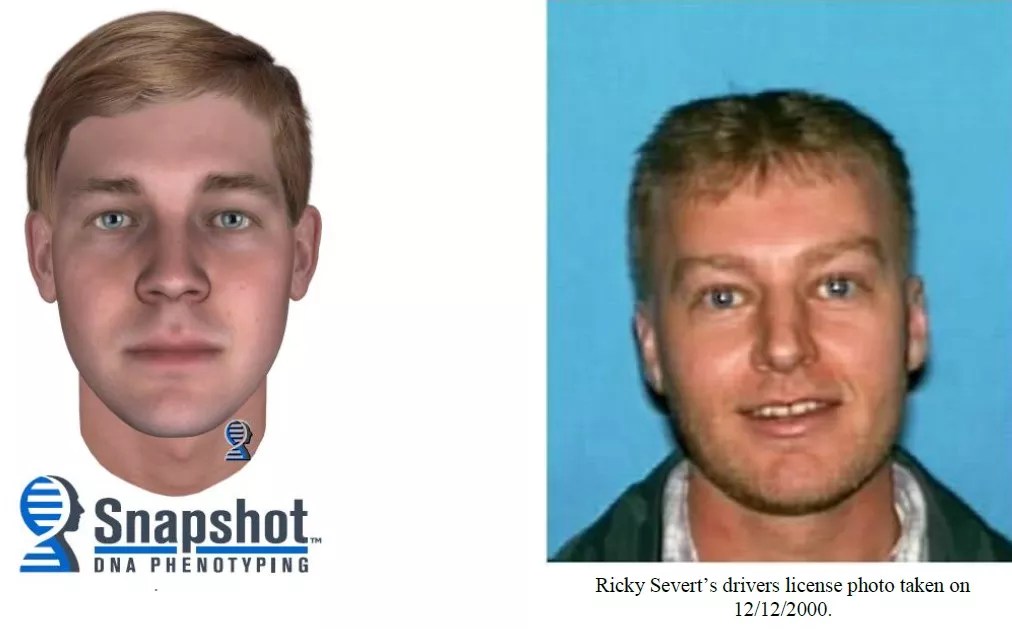
Family photo via Colorado Springs Police Department

Audio By Carbonatix
More than two decades after the slaying of Colorado Springs’s Jennifer Watkins, investigators using advanced DNA technology have identified Ricky Severt as her killer. But while Severt was never punished by the criminal justice system, he couldn’t escape karma: He was killed in an automobile accident two years to the month after Watkins’s disappearance.
We included the Watkins case in our 2013 roundup of unsolved Colorado murders, which featured the following summary from the indispensable Families of Homicide Victims & Missing Persons website:
Jennifer Lee Watkins (nee Skinner), 23, was the second of four children. Her youngest brother, Joseph, was closest to her heart. Jennifer graduated from Hanover (CO) High School. She liked to hang out with friends and she loved her animals. Jennifer enjoyed volley-ball and wanted to help people. She loved music and played clarinet in the school band. Jennifer wanted to be a nurse. It was after she enrolled in Barnes Business College in Denver that Michael Watkins, with whom she had gone to grade school, moved in and “her life went downhill from there,” according to her mother, Irene Skinner. Michael had problems with drugs. Jennifer was a victim of domestic abuse, requiring emergency room treatment on more than one occasion. They were married about three years when Michael got a job in maintenance at Memorial Hospital in Colorado Springs. Jennifer followed and got a job there as a dietician. On November 8, 1999, her body was found under a staircase leading to the helicopter pad at the hospital. She was wrapped in a sheet covered with construction plastic which was duct-taped closed. Jennifer suffered blunt trauma to the head. In addition to her mother, step-father and brothers, Jennifer left her children, Michael Jr., 3, and Mariah, 11 months. Jennifer is loved and missed by her family very, very, very much.
Little progress was made in the investigation for years despite plentiful DNA evidence. The Colorado Springs Police Department notes that a yellow-and-white stain on the plastic used to wrap Watkins’s body was subsequently identified as semen, and additional hair and fiber evidence was collected as well. But while this material cleared numerous suspects, presumably including Michael Watkins, who cooperated with the inquiry, it didn’t score any matches.
Denver, make your New Year’s Resolution Count!
We’re $12,000 away from reaching our $50,000 year-end fundraising goal. Your support could be what pushes us over the top. If our work has kept you informed and connected this year, please consider making a contribution today.
This equation began to change between 2017 and 2018, when detectives hooked up with Parabon NanoLabs, which had developed a technique called Snapshot. The company used the same approach in an attempt to find the person or persons who killed three members of Aurora’s Bennett family – father Bruce, mother Debra and seven-year-old daughter Melissa – in 1984; we featured the Bennetts’ story in the same 2013 post that included the Watkins case.
In a 2016 Westword report, Ellen Greytak, Parabon’s director of bioinformatics, told us how the Snapshot process works. “The long and the short of it is, we predict what someone looks like just from a DNA sample,” she said. “Typically, if you have a DNA sample, you enter it into a database and you search for matches. But while that’s great if you have a suspect you’ve identified, if that person isn’t in the database, you don’t have a suspect. So instead of looking at DNA like a fingerprint, we look at it like a blueprint – the information that builds that person.”
The technology allows Parabon to “tease out the parts of the DNA for different characteristics: eye color, hair color, the shape of the face,” Greytak went on. “The techniques that underlie it aren’t that new. They’ve been used in the medical field for a long time, and they’re known to work. But the application for appearance and forensics purposes is new.”
Snapshot ultimately produces a computer-generated image that should resemble the individual who left the DNA sample. Greytak insisted that “the composite isn’t intended to be like a driver’s license photo, but it will bear a resemblance.”
That was certainly the case with Severt, as you can see by the comparison of the Snapshot and – irony alert – his driver’s license photo:

The Snapshot image drawn from DNA left at the crime scene and Ricky Severt’s driver’s license photo.
Colorado Springs Police Department
Severt had been on the radar of law enforcement agencies in connection with Watkins’s death from early on. He was interviewed by detectives on November 19, 1999, because he was employed by the maintenance department at Memorial Hospital and had been working a swing shift on November 5, the date Watkins was last seen. At the time, Severt, then age 29, denied having spotted her.
Cut to March 2019, when the Combined DNA Index System (CODIS) finally scored a hit on the evidence from the Watkins case – and genealogical research traced it to Severt. But when detectives tried to track him down, they discovered that he’d been killed in a traffic accident on Highway 94, east of Colorado Springs, on November 2, 2001 – three days shy of two years from the day Watkins vanished.
The case has now been officially closed, and in a statement, CSPD Chief Vince Niski said, “After all these years, we are grateful to finally give Jennifer Watkins’ family the answers they deserve. No matter the length of time, we will always work to serve this community, and I am proud of all the cold case detectives throughout the last 21 years who have never stopped working for Ms. Watkins. Not for one moment did they ever lose sight of what was most important: Finding the truth for the Watkins family.”
And discovering that karma had already dealt with Ricky Severt.